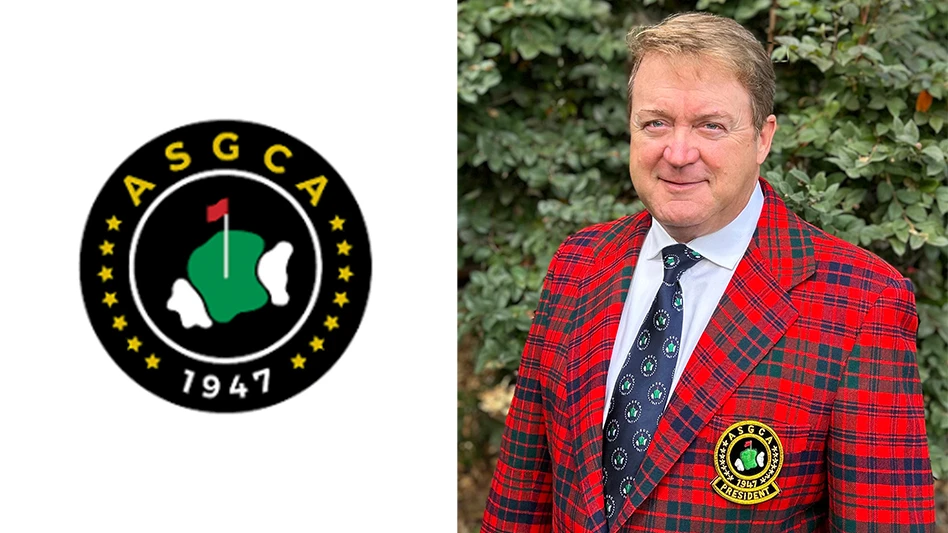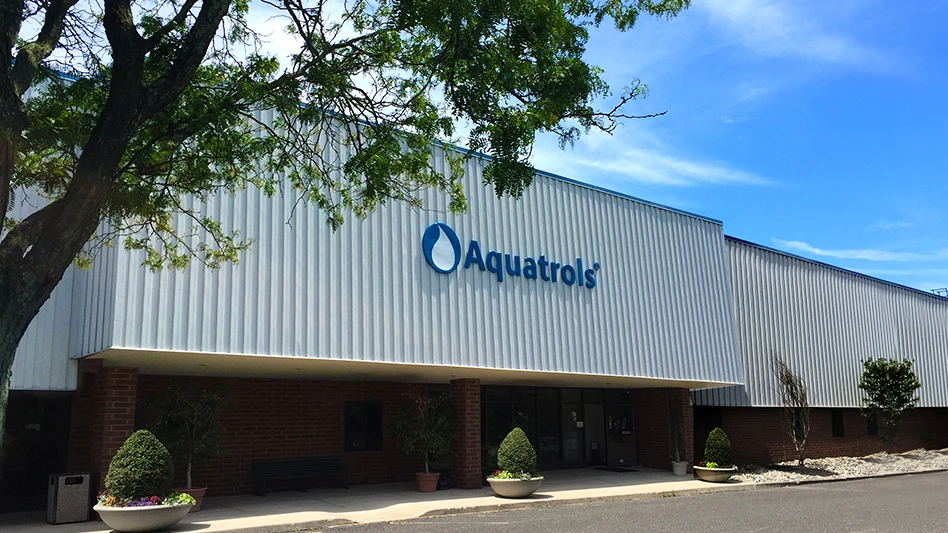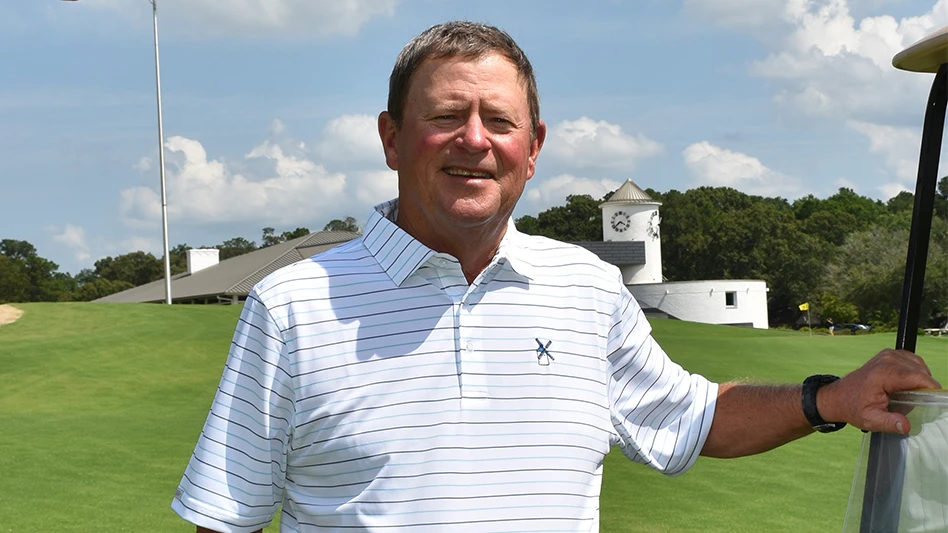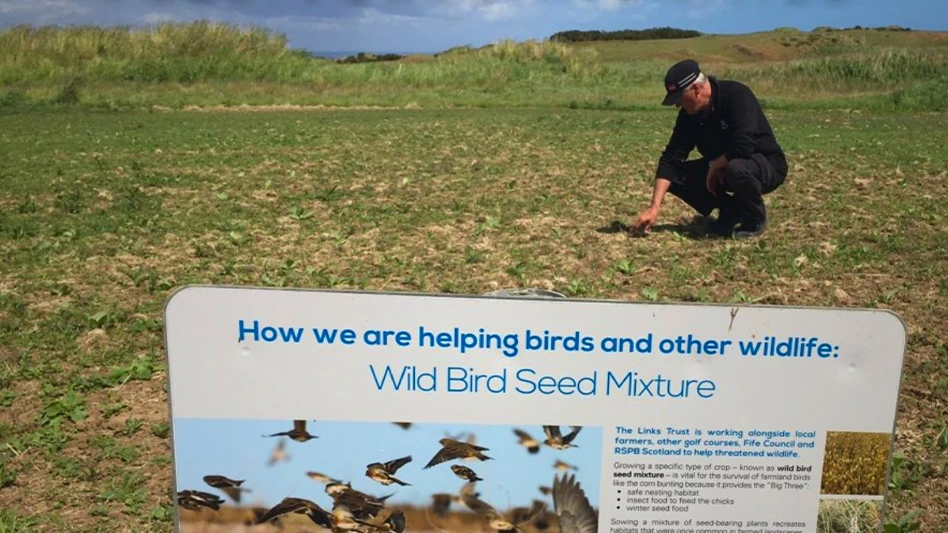 Controlling Poa annua remains on the stickiest problems superintendents face on a year in and year out basis. Eradication, where desired, is extremely difficult, while management in areas where superintendents must live grudgingly with the grass by incorporating it into the spectrum of their course’s strains is equally challenging. But that hasn’t stopped researchers and superintendent from continuing to study the issue as they seek ways to, if not conquer their testy foe, then at least allow turfgrass managers to live somewhat amicably with Poa annua.
Controlling Poa annua remains on the stickiest problems superintendents face on a year in and year out basis. Eradication, where desired, is extremely difficult, while management in areas where superintendents must live grudgingly with the grass by incorporating it into the spectrum of their course’s strains is equally challenging. But that hasn’t stopped researchers and superintendent from continuing to study the issue as they seek ways to, if not conquer their testy foe, then at least allow turfgrass managers to live somewhat amicably with Poa annua.
A recent report by Dr. Zac Reicher and Dr. Roch Gaussoin, professors in the department of agronomy and horticulture at the University of Nebraska-Lincoln, calls Poa annua, or annual bluegrass, a “formidable foe.” They say chemical controls have evolved over the years and are to a degree effective, but controlling any grass strain is difficult because of similar physiology and a lack of selective herbicides.
What makes Poa such a stout opponent is the simple fact that it is one of the most widespread plants in the world, with the grass found near the Arctic Circle to near the tropics. Obviously, Poa has learned to adapt and indeed thrive in a multitude of environments. If, as wags say, cockroaches would be the only animal or insect to survive a nuclear winter they might be munching on Poa annua to stay alive.
The UNL report says that controlling annual bluegrass starts with cultural controls because chemical controls have shown to be effective only in the short term and without solid control controls aimed at omitting annual bluegrass re-infestation. And, control is often regional and even course specific.
“Poa annua control is certainly region specific,” says Paul Giordano, a graduate research assistant in the Plant, Soil and Microbes Department at Michigan State University “Annual bluegrass is impressively genetically diverse, thus adapted to a wide range of environments. The annual types (var. annua) and the perennial types (var. reptans) of this species often differ greatly in their susceptibility to herbicide applications, diseases, drought, heat, and other management strategies.” He says climate (air and soil temperature, humidity, etc.) also play a role in whether or not particular control strategies are effective. “Often times the survival and proliferation of Poa annua on a golf course is dependent on the disease pressure in the region. For example, anthracnose and summer patch are two limiting diseases of annual bluegrass, which of course can be much more severe in certain regions of the country than others.”
Patrick McCullough, assistant professor and extension specialist at the University of Georgia, agrees that cultural and chemical practices used for annual bluegrass control vary by region and even golf course.
 “The history of herbicide use will eventually affect the biotype of annual bluegrass that is prevalent on one golf course,” he says. For example, exclusive use of dinitroanilines herbicides (pendimethalin, prodiamine, others) for annual bluegrass control over time may shift the population from a susceptible biotype to a resistant one. If this happens, it may take ten years or more using other herbicides with different modes of action to shift the population back to one that is susceptible to dinitroanilines herbicides. The presence of perennial biotypes will also vary by location, and are much more difficult to manage with herbicides than annual biotypes.
“The history of herbicide use will eventually affect the biotype of annual bluegrass that is prevalent on one golf course,” he says. For example, exclusive use of dinitroanilines herbicides (pendimethalin, prodiamine, others) for annual bluegrass control over time may shift the population from a susceptible biotype to a resistant one. If this happens, it may take ten years or more using other herbicides with different modes of action to shift the population back to one that is susceptible to dinitroanilines herbicides. The presence of perennial biotypes will also vary by location, and are much more difficult to manage with herbicides than annual biotypes.
Aaron Hathaway, a research assistant II at the Hancock Turfgrass Research Center, concurs that Poa annua control is “definitely region and course specific.” He adds, “Depending on the age of a site, especially a golf course, the question of controlling annual bluegrass may be a tougher decision. Golf courses that have been around for decades may have much more perennial type Poa (Poa annua var. reptans) than annual types. This annual bluegrass can produce less seed heads, be less susceptible to various stresses with deeper and more developed root systems, have more stoloniferous and tillering growth habits, and produce a beautiful stand for fairways and putting green surfaces. “
However, he adds, the above-mentioned perennial types are much more difficult to control than annual types. “There are all kinds of Poa annua plants that fall somewhere in between the perennial and annual types and they all may respond differently to herbicides and plant growth regulators, and to cultural practices as well.” All of these biotypes may respond differently to weather such as heat, drought, and winter condition prone to causing winterkill (snow mold, desiccation, and freezing).
Hathaway believes winterkill causes superintendents to think more about controlling annual bluegrass on golf courses. “One winter can do a lot of damage to a fairway or green or many fairways or greens that are made up of some or mostly annual bluegrass. Creeping bent grass doesn’t have this high susceptibility to winterkill and easily makes it a better choice for areas on golf courses that are prone to ice or have no wind breaks to prevent desiccation, etc.”
McCullough claims Poa “was a tough weed to stay ahead of” last fall in the southeast because of a cool and wet summer. “We had annual bluegrass germinate a few weeks early in Georgia this year, and we may be setting up for a tough winter and spring. Timing pre-emergence herbicide treatments this year was difficult and we may see a lot of cleanup applications needed this winter for uncontrolled annual bluegrass from pre-emergence herbicides applied too late.” Superintendents may need to switch chemistries of the herbicides they are using, and have an appreciation for how resistance in weed populations may develop as a result of repeated use of herbicide or modes of action year after year, he says.
Dr. Jason Fausey, regional field development manager for Valent Professional Products, says Poa generally survives in shady, wet, compacted soils where desirable turfgrass is weakened. “The weakened turf allows for an opening and Poa will take advantage and fill in those areas. Poa, being a weed with a tremendous amount of natural diversity in the gene pool, makes it very difficult to control. There are annual, biennial and perennial biotypes that all show varying degrees of sensitivity to herbicides.”
Focusing on the basics, i.e. proper use rate, timing, product choice and application techniques, can help. “Managing all the different aspects to maximize a Poa control program is essential to either keeping Poa out or reducing the amount of Poa on the course,” Fausey says.
Putting green height turfgrass is a bit more difficult to manage since fewer options exist for selective annual bluegrass control, Giordano says. Many of the products like Velocity are not labeled for use on greens. The best approach on putting greens is likely an integrated one, he adds, using management strategies that favor the growth and development of creeping bentgrass rather than annual bluegrass. “Over watering, for instance, can favor annual bluegrass invasion, as well as extremely low mowing heights that may create voids in the turfgrass stand,” he says.
Reicher and Gaussoin’s report states annual bluegrass in roughs can be controlled by turning off irrigation in July and/or August to force the desired grass into dormancy, which should kill the annual bluegrass. Apply any labeled pre-emergence herbicides (other than siduron) and start regular irrigation to bring the desired turf out of dormancy. The desired turf should recover fairly quickly, whereas the pre-emergence herbicide will prevent the annual bluegrass from germinating. A second application may be needed later in the fall or early next spring to maximize annual bluegrass control. Since some seed will remain viable, continue the late summer pre-emergence herbicide application for two to three years or until annual bluegrass is no longer a problem.
 There are tested and effective products to help superintendents control annual bluegrass, and a few new ones in the pipeline. “Sureguard (flumioxazin) is a new herbicide we have been working with for the last several years in Bermudagrass,” says McCullough. “This is a new chemistry for pre- and post-emergence control of annual bluegrass with significant residual control of annual weeds, such as crabgrass and goosegrass. Sureguard is the only chlorophyll synthesis inhibiting herbicide (protox inhibitor) available in turfgrass, and offers a new mechanism of action for post-emergence annual bluegrass control. It also picks up annual broadleaf weeds pretty well including henbit, hop clover, and chickweeds.”
There are tested and effective products to help superintendents control annual bluegrass, and a few new ones in the pipeline. “Sureguard (flumioxazin) is a new herbicide we have been working with for the last several years in Bermudagrass,” says McCullough. “This is a new chemistry for pre- and post-emergence control of annual bluegrass with significant residual control of annual weeds, such as crabgrass and goosegrass. Sureguard is the only chlorophyll synthesis inhibiting herbicide (protox inhibitor) available in turfgrass, and offers a new mechanism of action for post-emergence annual bluegrass control. It also picks up annual broadleaf weeds pretty well including henbit, hop clover, and chickweeds.”
Giordano offers, “Some golf courses with extensive budgets may employ any measures available, including frequent use of growth regulators like paclobutrazol and flurprimidol, as well as post emergent herbicides like bispyribac-sodium on creeping bentgrass fairways.” These strategies are used to progressively shift the stand in favor of creeping bentgrass, slowly and gradually phasing the annual bluegrass out.
Hathaway says the product PoaCure (methiozolin) is “the newest and most promising product for poa control.” It is not yet labeled. “The best thing about PoaCure is that it is extremely safe on other cool season turfgrass species, like creeping bentgrass and Kentucky bluegrass. Xonerate (amicarbazone) is new and I would say comparable to Velocity--it will injure creeping bentgrass some. You must make multiple application with a short application interval to achieve subtle conversion from annual bluegrass to creeping bentgrass, and it works best in warmer temperatures.”
Trimmit (paclobutrazol) and Cutless (flurprimidol) are common plant growth regulators that have been around for a while and have proven to work well for annual blue grass control. “But you must just keep using them as a program approach year after year for the most part,” Hathaway says.
It is important to understand the active ingredient in the new products they are using, says McCullough. “Although there have been new products released recently that have improved turf tolerance or efficacy for annual bluegrass control, many of these herbicides are old modes of action with significant resistance issues.” Turf managers trying new products need to do their homework on the active ingredients, he advises, and consider rotating modes of action to minimize resistance issues in annual bluegrass populations.
“Time will tell,” he adds, on whether there is a breakthrough Poa annua control product in the not too distant future. “We have been testing several new herbicide chemistries with significant potential for controlling annual bluegrass. However, the cost, selectivity, and labeled areas may not be suitable for all golf courses, if and when they are released.”
New herbicides or plant growth regulator will aid in the fight against Poa, says Dr. Fausey. “However, long-term, the best management programs in the future will intergrade all available control options.”
Hathaway adds, “Supers should know that there simply is no silver bullet method for Poa annua control. If control is desired, multiple control methods (post-emergence, plant growth regulators, pre-emergence, cultural practices) must be put in place to do it well.”
John Torsiello is a Torrington, Conn.-based writer and a frequent GCI contributor.

Explore the February 2014 Issue
Check out more from this issue and find your next story to read.
Latest from Golf Course Industry
- The Aquatrols Company adds former superintendent to its R&D team
- Heritage Golf Group expands into Tennessee
- Making the grade — at or near grade
- PBI-Gordon receives local business honor
- Florida's Windsor takes environmental step
- GCSAA names Grassroots Ambassador Leadership Award winners
- Turf & Soil Diagnostics promotes Duane Otto to president
- Reel Turf Techs: Ben Herberger





